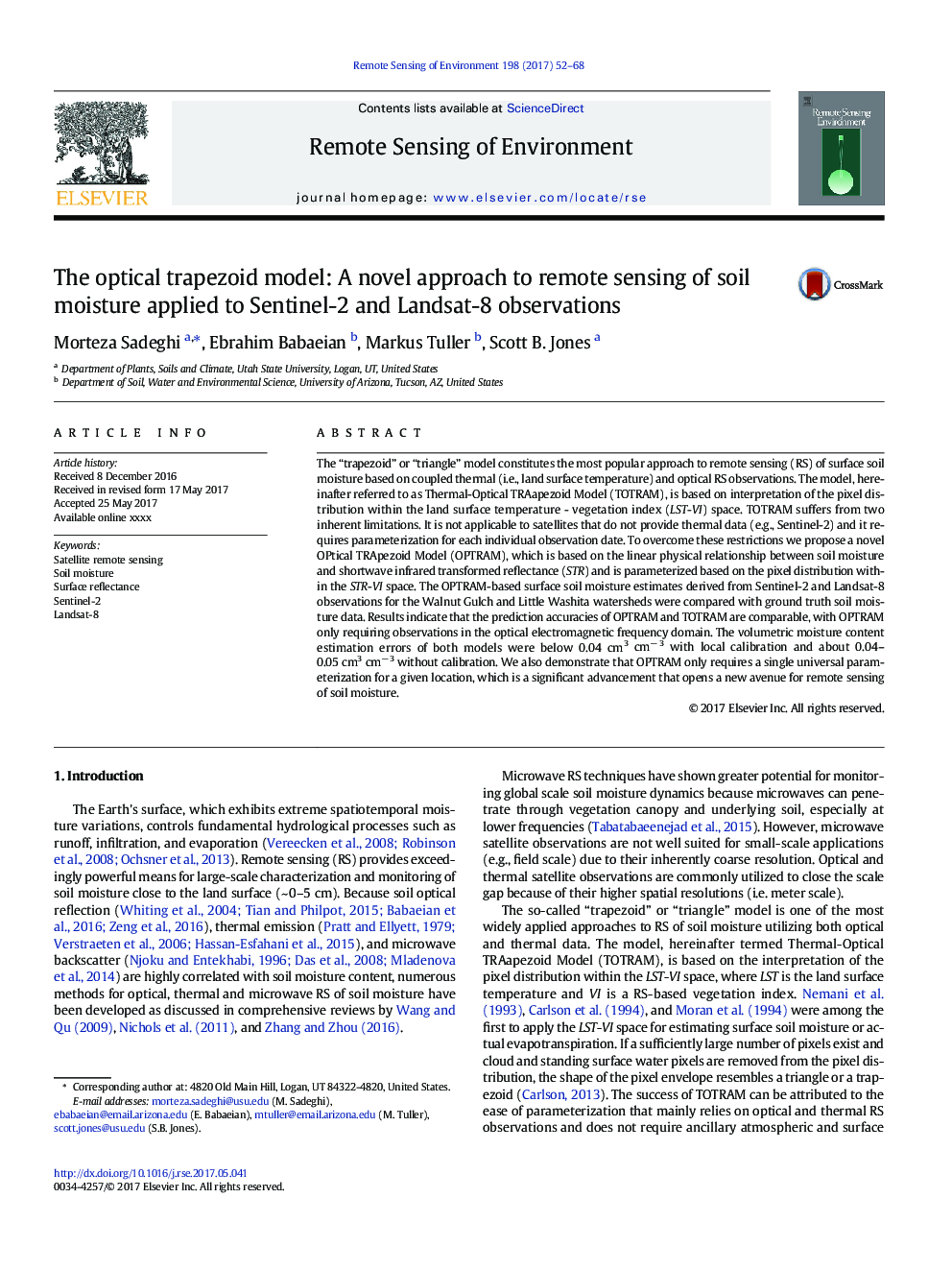| Article ID | Journal | Published Year | Pages | File Type |
|---|---|---|---|---|
| 5754917 | Remote Sensing of Environment | 2017 | 17 Pages |
Abstract
The “trapezoid” or “triangle” model constitutes the most popular approach to remote sensing (RS) of surface soil moisture based on coupled thermal (i.e., land surface temperature) and optical RS observations. The model, hereinafter referred to as Thermal-Optical TRAapezoid Model (TOTRAM), is based on interpretation of the pixel distribution within the land surface temperature - vegetation index (LST-VI) space. TOTRAM suffers from two inherent limitations. It is not applicable to satellites that do not provide thermal data (e.g., Sentinel-2) and it requires parameterization for each individual observation date. To overcome these restrictions we propose a novel OPtical TRApezoid Model (OPTRAM), which is based on the linear physical relationship between soil moisture and shortwave infrared transformed reflectance (STR) and is parameterized based on the pixel distribution within the STR-VI space. The OPTRAM-based surface soil moisture estimates derived from Sentinel-2 and Landsat-8 observations for the Walnut Gulch and Little Washita watersheds were compared with ground truth soil moisture data. Results indicate that the prediction accuracies of OPTRAM and TOTRAM are comparable, with OPTRAM only requiring observations in the optical electromagnetic frequency domain. The volumetric moisture content estimation errors of both models were below 0.04 cm3 cmâ 3 with local calibration and about 0.04-0.05 cm3 cmâ 3 without calibration. We also demonstrate that OPTRAM only requires a single universal parameterization for a given location, which is a significant advancement that opens a new avenue for remote sensing of soil moisture.
Related Topics
Physical Sciences and Engineering
Earth and Planetary Sciences
Computers in Earth Sciences
Authors
Morteza Sadeghi, Ebrahim Babaeian, Markus Tuller, Scott B. Jones,
